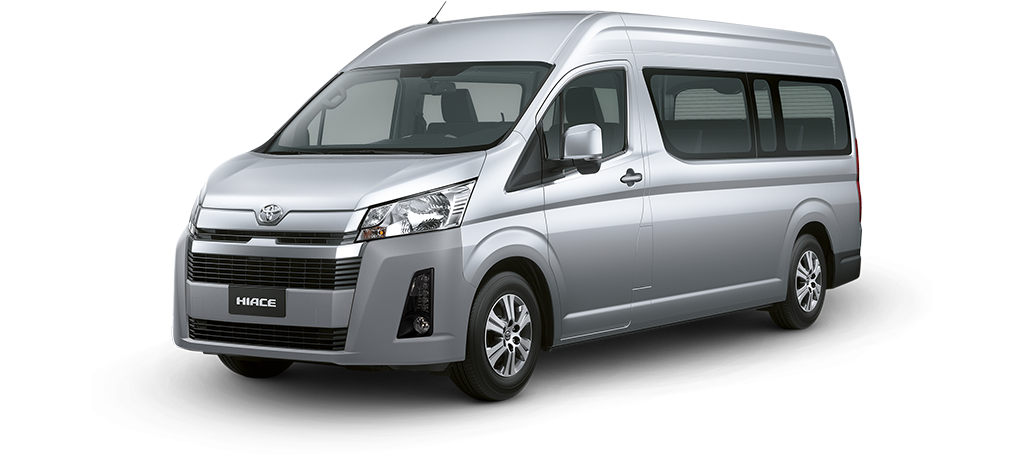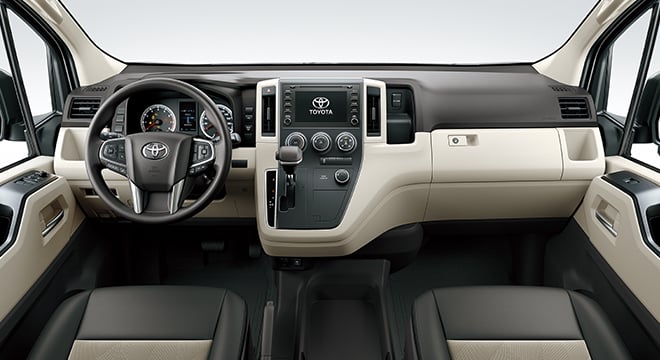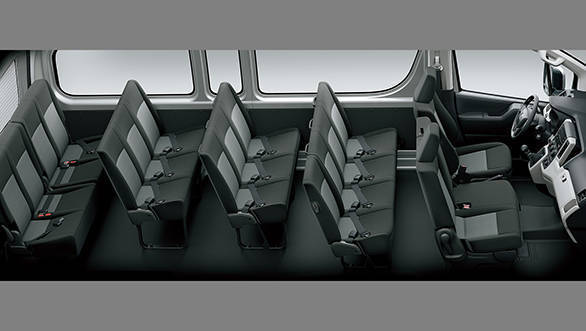Are you experiencing issues with maintaining the right hiace van tire pressure? This guide offers clear and practical steps to help you adjust your tires correctly, ensuring your safety and optimizing performance in any condition.
How to Check and Adjust Your Hiace Van Tire Pressure
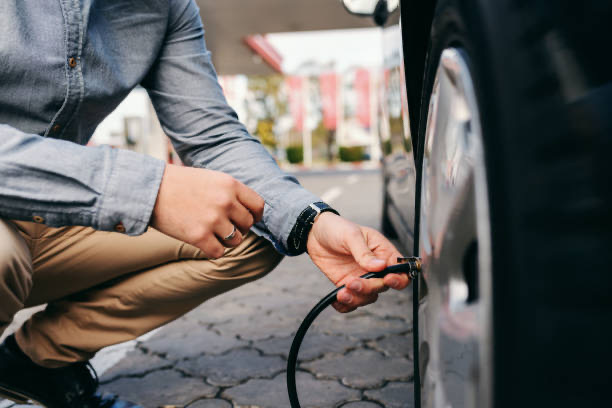
Every safe journey begins with properly inflated tires. In this section, we explain how you can easily check and adjust your tire pressure with simple tools. You will learn the essential steps to achieve the best performance for your Hiace van.
Required Tools for Pressure Checks
Before you start, ensure you have these useful tools:
A reliable digital tire pressure gauge, though an analog version can work in a pinch.
An air compressor that clearly shows PSI readouts.
Your owner's manual, which is especially important since the 2025 Hiace models have updated pressurized guidelines.
These tools can help you follow the proper PSI recommendations while monitoring load capacity and ensuring optimum fuel efficiency.
Step-by-Step Pressure Adjustment
Follow these steps carefully to strengthen your safety and the longevity of your tires:
Always check your tires when they are cold, meaning your van should have been parked for at least three hours without heavy use.
Remove the valve stem caps to ensure you get an accurate reading.
Press the tire gauge firmly onto the valve to get a true pressure reading.
Compare the measured value with the guidelines on your doorjamb sticker; for most 2025 Hiace models, the front tires typically run at around 32 PSI, while the rear tires might need up to 36 PSI. This recommendation might vary depending on extra load capacity.
Use the air compressor to add or release air accordingly until your tires match the recommended PSI, ensuring the best balance between performance and safety.
Following these clear and concise instructions will help you avoid common pitfalls such as neglecting the spare tire, confusing seasonal pressure settings, or missing your monthly tire checks.
Common Pressure Check Mistakes
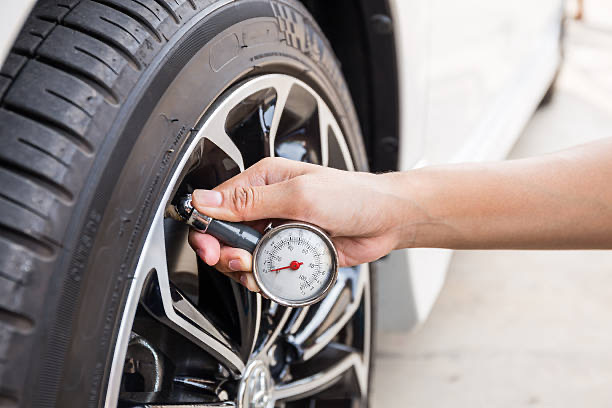
When checking your hiace van tire pressure, you want to ensure everything runs smoothly. Here are some mistakes that you should definitely avoid:
Overlooking the spare tire; even if it is seldom used, it should be maintained at around 40 PSI.
Mixing up summer and winter pressure settings, which can cause unwanted tire wear patterns.
Skipping regular monthly pressure checks, a habit that may lead to gradually reduced fuel efficiency and safety issues.
2025 Hiace Tire Pressure Recommendations
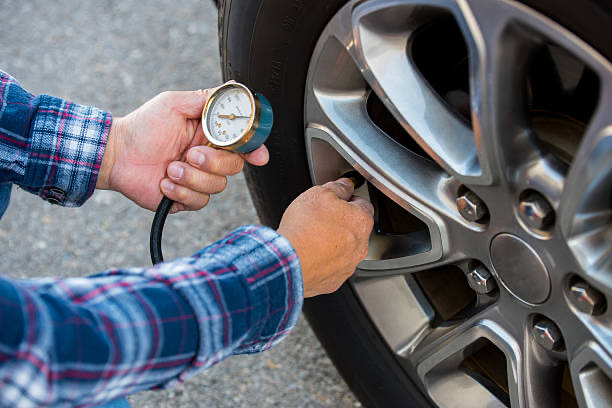
When considering proper maintenance, knowing the right tire pressure for various conditions is essential. The following recommendations are provided to help you adjust your tires based on your load and seasonal changes.
Factory-Recommended PSI Chart
This table lists the suggested PSI values adapted to load conditions based on GCC certification standards:
Load Condition | Front Tires | Rear Tires |
|---|---|---|
Empty | 32 PSI | 32 PSI |
Half Load | 33 PSI | 34 PSI |
Full Capacity | 34 PSI | 36 PSI |
By referring to this chart, you can ensure that your tire pressure meets the needs of different driving scenarios. It also helps in maintaining optimal fuel efficiency and even tire wear.
Seasonal Pressure Adjustments
Adjustments in tire pressure are important, especially under the extreme weather conditions found in the Gulf region. Here’s how you can tweak your settings:
Summer Driving in the GCC Region:
In the blazing heat, particularly when temperatures soar near or above 45°C, consider reducing the tire pressure by 2-3 PSI during the hottest parts of the day.
Regularly check the pressure on a weekly basis to combat the effects of excessive heat, ensuring that your tires do not overinflate or underinflate.
Winter Maintenance:
During cooler mornings or when temperatures drop below 20°C, adding 3-4 PSI can help maintain optimum performance.
Keep a weekly check routine in the cooler months to ensure that any drop in temperature, which might affect tire pressure, is promptly addressed.
Tire Pressure Impact on Vehicle Performance
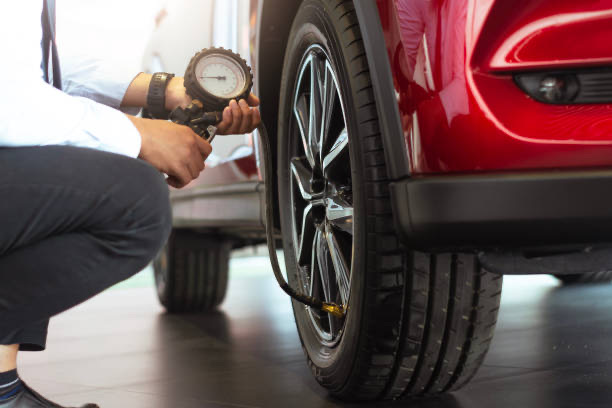
Accurate hiace van tire pressure is not just about safety; it plays an important role in your van's overall performance. Let’s explore how the right inflation fosters fuel efficiency, load handling, and proper tire wear patterns.
Fuel Efficiency Connection
When your tires are properly inflated, you can expect a significant boost in fuel economy. Correct pressure can improve your mileage by up to 3%, which means spending less on fuel in the long run. Even a small underinflation of around 5 PSI might lead to a loss of approximately 1.5% in fuel efficiency. Keeping an eye on your tire pressures is hence a very effective strategy to save both money and energy.
Load Capacity Considerations
Your Hiace's performance is closely linked with how the load affects tire pressure. For example, every extra 100kg of cargo might require an increase of about 1 PSI, as exceeding the maximum load capacity can strain your tires. When carrying heavy loads, it is a good idea to use the tire pressure monitoring system (TPMS) load assist mode, which automatically suggests adjustments. This approach will help maintain safety and ensure that your vehicle operates within the GCC certified limits.
Wear Pattern Indicators
Tire wear can tell you a lot about whether your hiace van tire pressure is appropriate. If you notice that the center of the tire is wearing out faster, this could indicate overinflation. On the other hand, excessive wear along the edges often suggests underinflation. Uneven wear patterns or patchy footprints may also signal that the pressure is unbalanced, requiring immediate attention. Recognizing these patterns early can save you from costly repairs down the road.
Advanced TPMS Features in 2025 Models
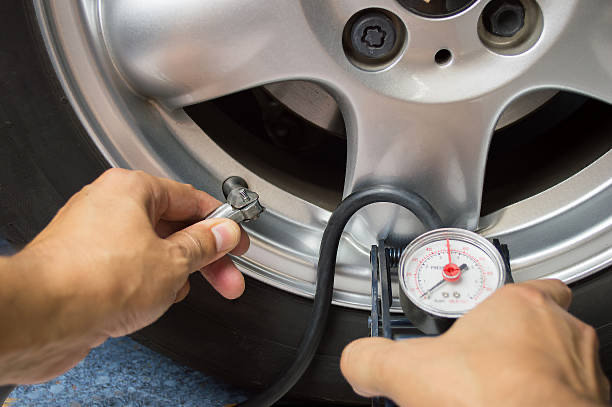
Modern 2025 Hiace models come equipped with a cutting-edge tire pressure monitoring system (TPMS) that helps you manage your tire pressure in real time. Let’s break down the features that make this system so indispensable:
Real-Time Pressure Monitoring
Your vehicle’s dashboard displays a dynamic, color-coded readout of your tire pressures. This system offers automatic pressure alerts if any tire deviates from the optimal PSI. With temperature-compensated readings, you can trust that the information is accurate even in extreme GCC weather conditions. These TPMS features aid in maintaining proper load capacity and fuel efficiency while preventing tire wear irregularities.
Maintenance Mode Activation
Activating the maintenance mode on your TPMS is a simple process designed for immediate adjustments:
Park your Hiace on a level surface and engage the parking brake.
Hold the TPMS button for about 5 seconds until the system activates.
Follow the on-screen prompts to calibrate your system, ensuring all tires are aligned with the recommended PSI.
This mode is particularly useful after unexpected pressure changes or following tire rotation.
System Calibration Schedule
To get the most precise readings from your TPMS, it’s important to recalibrate the system at key service intervals:
Every time you rotate your tires
After making any tire pressure adjustments
Following a wheel alignment service
This regular calibration is essential to keeping the system accurate, ensuring that every drive is safe and the tires perform at their best.
FAQ
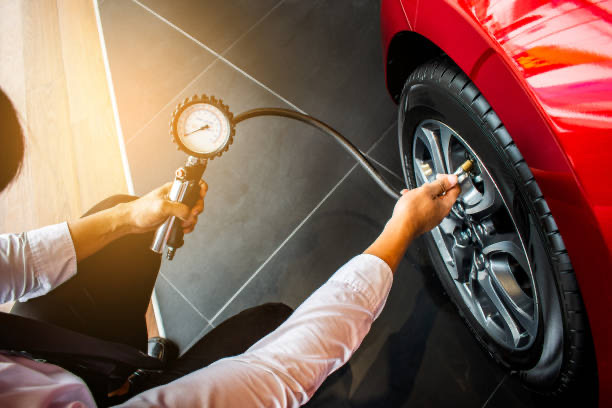
How often should I check my hiace van tire pressure?
You should check your tire pressure at least once a month, even if everything seems fine with your Hiace. Regular monthly checks help you catch small changes before they become bigger issues. In the GCC region, where temperatures can fluctuate significantly, more frequent inspections during extreme weather are advisable. Using a digital gauge, you can easily monitor the PSI of each tire and compare them against the recommended values. Remember that maintaining the proper tire pressure not only ensures your safety but also enhances fuel efficiency and your vehicle’s load capacity. This steady routine is key to prolonging tire life and avoiding uneven tire wear patterns.
What impact does underinflation have on my Hiace van?
Underinflated tires can have several negative effects on your Hiace van. With 5 PSI less than the recommended pressure, you could see a fuel economy loss of around 1.5%. The reduced pressure increases rolling resistance, which means your engine has to work harder, ultimately reducing your van's performance. Underinflation also leads to uneven tire wear, particularly along the edges, which may signal that the tires need immediate attention. These issues can combine to affect the vehicle's overall safety and reliability. Maintaining the correct PSI is therefore crucial for optimal performance and longevity. This advice is particularly important considering the specific load capacity and design features of Hiace vans.
How does load affect the recommended tire pressure in my Hiace van?
The load you carry in your Hiace van directly influences what tire pressure is ideal for safe driving. Typically, an increase of approximately 1 PSI is recommended for every 100kg of extra cargo, ensuring that the tire can support the additional weight. Overloading without corresponding pressure adjustments may compromise the tire's integrity and lead to accelerated wear. Always refer to the doorjamb sticker or your owner's manual for the appropriate PSI based on load conditions. Proper adjustments help maintain balance, preserve fuel efficiency, and reduce the risk of uneven tire wear patterns. This approach follows GCC certification standards, ensuring consistency and reliability.
Are there any benefits to using the TPMS in my 2025 Hiace van?
Yes, the advanced TPMS in your 2025 Hiace van offers numerous benefits. The system continuously monitors tire pressure and immediately alerts you if any tire deviates from the optimal range, making it easier to maintain the recommended PSI. Its temperature-compensated readings are especially beneficial in the extreme climates of the Gulf region. By enabling real-time monitoring and automated alerts, TPMS helps prevent issues like underinflation that could lead to poor fuel efficiency and uneven tire wear. Moreover, engaging the maintenance mode and adhering to calibration schedules ensures that your TPMS remains accurate and effective. This feature is a practical help for every hiace van owner looking for convenience and enhanced safety.
What adjustments should I consider for seasonal changes?
Seasonal variations demand careful tweaks in your hiace van tire pressure. In the scorching heat of summer, particularly in the GCC with temperatures frequently reaching 45°C or more, reducing the PSI by about 2-3 units during the hottest parts of the day can help avoid overinflation. Conversely, during the cooler winter months, adding an extra 3-4 PSI when the dew is still on the ground helps maintain optimal performance. These adjustments not only enhance fuel efficiency but also ensure even wear across the tire surface. By regularly monitoring tire pressure during seasonal changes, you can maintain the overall health of your tires while adhering to the specific GCC standards. This guidance is provided solely for informational purposes; please consult local laws and regulations as they may vary.
This article is for informational purposes only. Please refer to the latest local laws and regulations for official guidelines.
Read More:
Peugeot Cars Made in Which Country? 2025 Manufacturing Insights
Which Engine Oil Is Best for Car in 2025? The Complete Guide
3 pics

Mustafa Karim, having been deeply involved in automotive research and development for over ten years. He is fond of Japanese cars, and their precise and energy-efficient features have influenced him. In his spare time, he loves Japanese anime and kendo, drawing inspiration from them for control system research and development. He also often shares cutting-edge automotive knowledge on platforms, contributing to industry innovation and adding strength to automotive development with his expertise.
